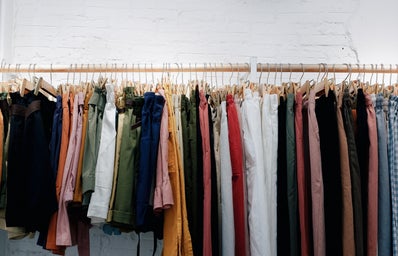Here in Richmond, we like to pride ourselves on being creative thrifters who spend our Saturdays at Buffalo Exchange and upcycling our old clothes. We love to buy vintage and steal our mothers’ 90s clothing. At some point, we have probably encountered friends who aren’t impressed with buying used clothing. Have you ever had a conversation with a friend and when you compliment her shirt she says something like “Thanks, I got it from SHEIN!”… Cringe. Wince. Sigh. Where do you even begin? Should we talk about the quality of the clothes or the exploitation of underpaid workers? Or should we talk about how our generation carries the responsibility of having to save the planet from HUGE environmental crises like climate change and textile waste.
How confusing is it that Gen Z seems to be split with half of us committed to buying more sustainably and the other half buying fast fashion without a thought of a credit card swipe. I believe this is less of a moral problem but a convenient choice most people make. If you ask most people if they want the earth to be a healthy place, most people will say yes. In an article that discusses Gen Z’s divide between sustainability and fast fashion, Dr. Marc Duffy concluded that “Generation Z are increasingly concerned for the planet, with 94% believing that action is needed relative to sustainability, and that we need to come together to solve important issues.” If we all agree that fast fashion is bad for the planet, why do we continue to purchase mass amounts of clothing and accessories that we may only wear once? Researchers from the same study identified factors that explain why people buy fast fashion: price, lack of knowledge on the subject, desirable aesthetics, lack of choice, business transparency and social pressure. The global fast fashion market alone is worth $30.58 billion.
As a fashion student, I acknowledge the pressures of not being an outfit repeater, following the micro trends and showing off the newest shoes of the season. At the end of the day, why do we care so much about all wearing the same trends and the same brands? Our modern fashionistas should prioritize individuality and expressing yourself through unique pieces. Unfortunately our generation consumes the most fast fashion than ever before and has the worst buying habits. Let’s do some math: there are about 2.5 billion people a part of Gen Z in the world which accounts for ⅓ of the global population and in the short span of time we have been shopping we have been contributing to the 40 million tons of textile waste made each year.
But whose fault is it really that fast fashion and shopping addictions are influencing our modern generation? Gen Z is the first group that grew up with the most technology and social media. Our negative reaction to social media is unprecedented because past generations never carried the burden of the pressures these media platforms impose on us. Fashion influencers who follow trends or even start them are wearing clothing they are sent for free, leaving viewers desperate for an alternative. Forbes claims that “one in three Gen Z consumers say they feel addicted to fast fashion.” The fashion industry does not have many regulations because they make so much money off of underage workers, cheap costs and poorly made clothing and accessories. Personally, the response I hear the most about why people buy fast fashion is because they don’t have the money to buy from sustainable brands. Katie Robinson, a young student, suggests that she has no other options: “You can either shop secondhand or you can just fall into the fast-fashion trappings and there’s not any other options.” There’s definitely a difference between buying secondhand because you want to and another when you have to because it’s the only choice you have.
Take this carbon footprint quiz from ThredUp to calculate your impact on the planet and get tips on how to make your footprint less negatively impactful! Find out more. All we can do is educate ourselves about the impact we have on the planet and do our best to prolong everything we have before throwing it away. Shopping secondhand, trading with friends and upcycling are only a few ways we can get more use out of already-made clothing. If you have to buy new, there’s nothing wrong with purchasing from a store but make sure to check the fabric content first. Try to buy cotton, silk and other natural fibers and stay away from synthetics like polyester and rayon. Take the best care of your clothing and find new ways to wear them!



